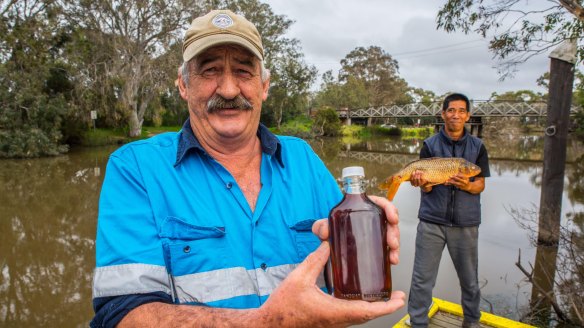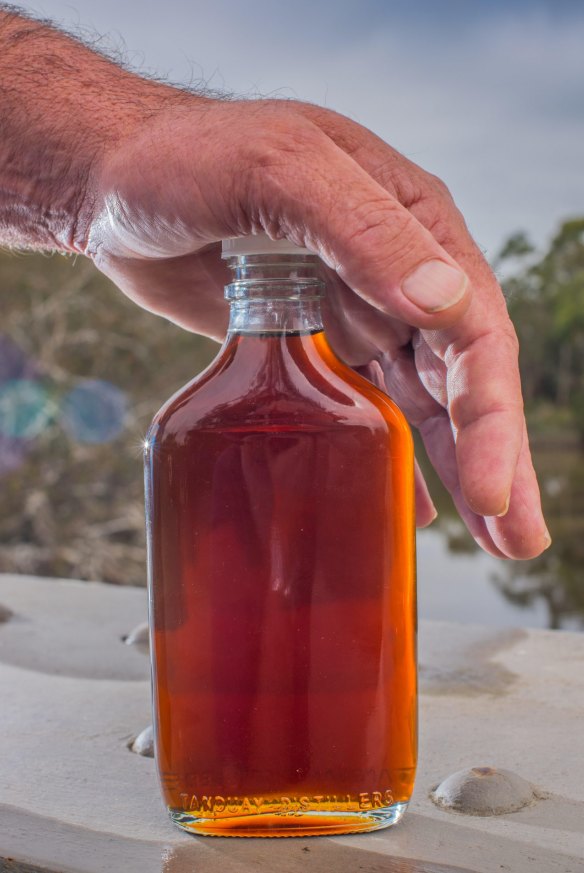Fisherman finds a saucy solution to an aquatic pest problem

Fisherman Peter Ingram is using a 2000-year-old recipe to save the Gippsland Lakes from European carp by turning the pest species into a salty sauce.
Ingram, 58, had a business catching carp for lobster bait and long-finned eels for export to China in the lakes and rivers around Sale in Gippsland, 220km east of Melbourne.

"That bloody virus really knocked us for six," says Ingram. "We knew the coronavirus was going to cause havoc when all our Chinese eel orders were cancelled early on in 2020, a good week before we even started just talking about it here."
Soon after the eel export market dried up, the Chinese stopped taking Australian lobsters. "That was our bait business gone."
The double blow got Ingram thinking about the fish sauce his partner Revelina Vite used to prepare Filipino dishes such as rich, sour sinigang soup and dipping sauce for spring rolls.
He learnt that Australia imports about 5 million litres of fish sauce annually. Some of it is exceptional. "But a lot of it is very ordinary," says Ingram. "Ask my partner."
Many South-East Asian recipes for fish sauce just tell you to put fish in a concrete hole in the ground, add salt, cover it with corrugated iron and let it fester in the sun, Ingram says with a laugh.
He then came across a Roman recipe dating back to pre-Christian times. He followed the recipe, pulverising carp into a rough pulp, putting it into food-grade containers with salt and leaving it to ferment and mellow.
"One little problem we encountered was that neither the local council nor PrimeSafe (Victoria's meat licencing authority) have much experience with a 2000-year-old fish fermenting recipe," he says. "So let's say it was a learning process for everyone."
Ingram pulls out a sample that is three-quarters along the maturation process. It is a heady golden-brown brew with a fresh, salty zing on the razor's edge between decay and deliciousness, but no hint of muddiness.
While not yet ready, Vite says it already better and fresher than anything she can buy on the shelves.
The raw material for Ingram's fish sauce is European carp, introduced to Australia's waterways more a century ago and now considered a noxious pest. The fish have devastated biodiversity and ruined the water quality in Gippsland's lakes, rivers and wetlands.
"Carp, when they are hungry and in big numbers, burrow into the mud foraging for worms and prawns," he says. "We have seen them burrow two metres into the bank."
The burrowing muddies the water and undermines the banks, bringing down river red gums. "The old river fishermen say the forest along the river is almost unrecognisable," says Ingram. "Some of the trees the carp are killing are Aboriginal scar trees."
Ingram and his assistant, Don Enriquez, fish the carp using an electrified scoop net that stuns the fish within a four-metre range of his 9-metre aluminium punt. The stunned fish are placed into bins of oxygenated water and then packed into ice slurry. What he doesn't turn into fish sauce he sells fresh to the Sydney and Melbourne fish markets.
Reducing carp numbers has already had a noticeable effect in his fishing area. "The fish don't get hungry, so they don't burrow into the mud and the water is clear."
While his fish sauce project is in pilot stage, regional peak body Food and Fibre Gippsland has lined up top Gippsland chefs – Mark Briggs at Sardine in Paynesville and Trevor Perkins at Hogget in Warragul – to sample the fish sauce when it is ready in a few months' time.
If successful, Ingram will commercialise the sauce and distribute it nationally, which he hopes will create employment for about 10 people. "When you get given carp," says Ingram, "you make fish sauce."
Fish sauce 101
Fish sauce has been made around the world for thousands of years. The Greeks and early Romans called it garum, and later Romans knew it as liquamen. It is still made today from anchovies in Sicily, where it is called colatura di alici. In East Asia, fish sauce is known as patis in the Philippines, nam pla in Thailand, nuoc mam in Vietnam and shottsuru in Japan.
It is made when fish and salt are fermented together. Halophilic (salt-loving) bacteria and natural enzymes break the protein in the fish into amino acids such as glutamic acid, which gives us a strong sensation of umami or deliciousness.
While essential for Thai curries and Vietnamese dipping sauce, fish sauce can add a salty, savoury punch to meat dishes such as burgers or braises. Brush it over poultry before roasting, add a dash to salad dressing and or add a teaspoon to stir-fried noodle dishes.
